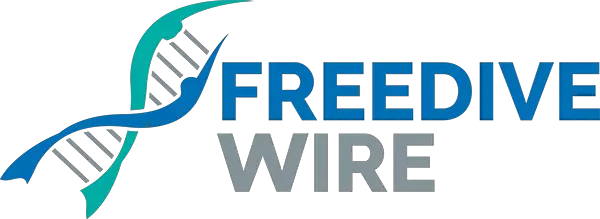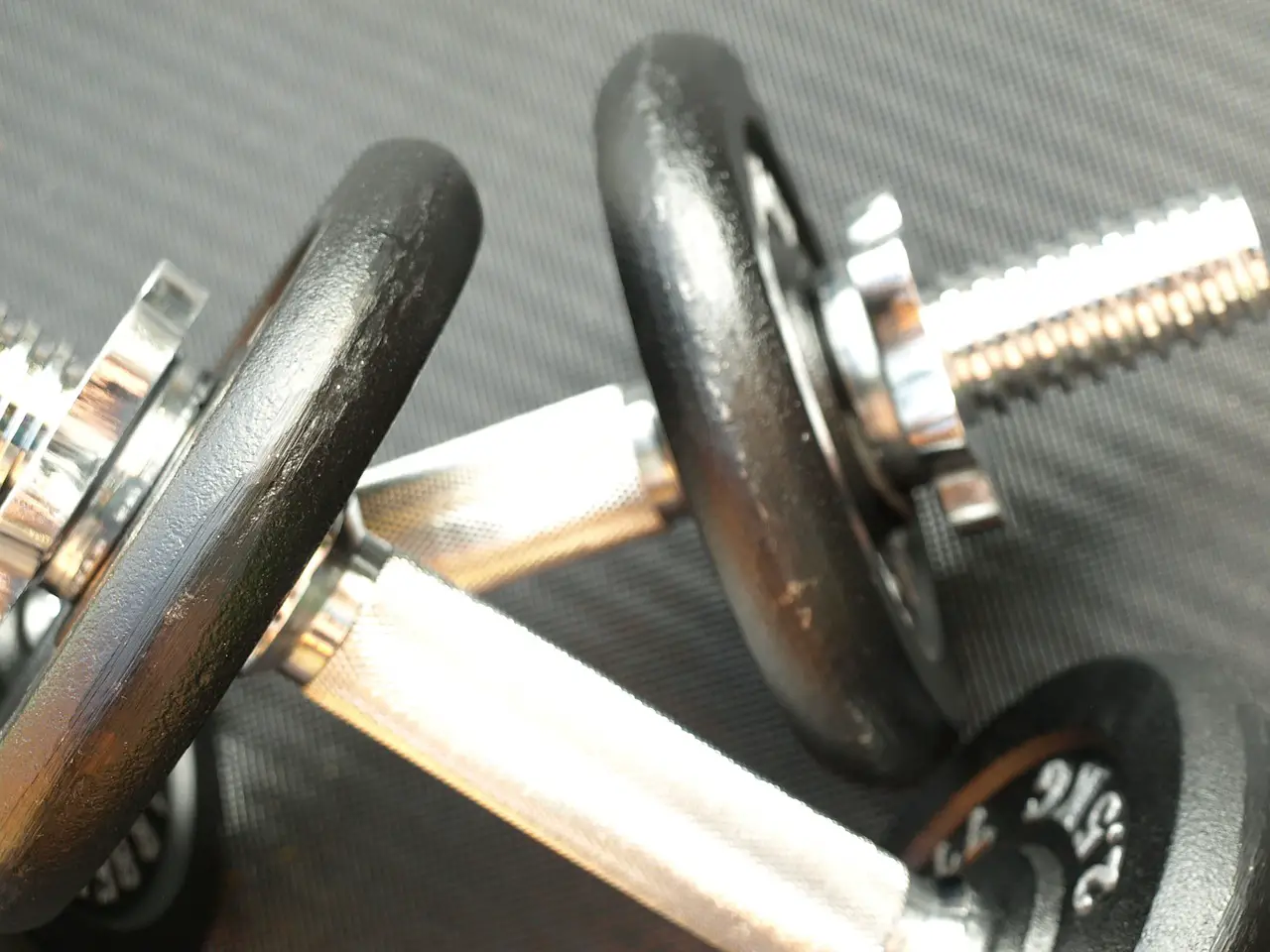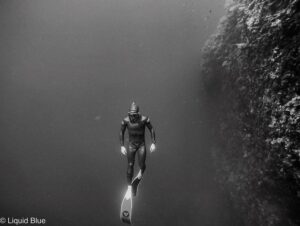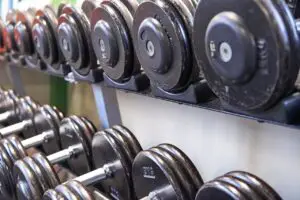This article is the first in a 3-part series on muscle composition, performance, and failure during breath holding. This article is long and fairly technical. In a rush? Just read everything in bold.
Muscle fiber types and freediving
Muscle fibers use fuel in order to deliver power. This fuel is metabolized via different reactions, called metabolic pathways. There are different types of fuel, different types of muscle fiber, and different metabolic pathways to consider. The purpose of this article is to provide you with an understanding of how muscles perform and metabolize under hypoxic conditions. In light of that will come some speculation on training for freediving. What types of muscle fiber are beneficial for freedivers? What type of fuel do we need in muscles and how do we increase the abundance of that fuel?
Anaerobic and aerobic metabolic pathways
Muscles can perform under either aerobic or anaerobic conditions. Under aerobic conditions, the supply of oxygen to the muscle is sufficient to keep up steady state performance. This includes for example walking and low speed running. Under aerobic conditions, glucose is converted to pyruvate. Pyruvate in turn enters the metabolic pathways called the krebs cycle and oxidative phosphorylation to yield ATP, which is used directly as a fuel in muscle fiber. It is an efficient process that yields 34 ATP molecules per glucose molecule.
If the supply of oxygen is reduced, or the intensity increased, aerobic processes may not be able to deliver enough energy for the work required. This occurs for instance if you are sprinting. The body will require much more oxygen than it can deliver to the muscle. Thankfully, anaerobic processes take over and supply more energy to the muscle, although they can only do so for a short period of time. During anaerobic exercise, the body develops an oxygen debt that needs to be paid later (as evident from increased ventilation after a sprint). Anaerobic high intensity exercise cannot be maintained for more than about 2 minutes. Anaerobic exercise can be alactic and lactic. Alactic anaerobic exercise consumes stored ATP, which is quickly replenished by creatine phosphate. As the name implies, no lactate is produced during alactic anaerobic processes, but they cannot fuel muscles for more than 10 seconds under high intensity exercise. Lactic anaerobic metabolic pathways take over after creatine phosphate and stored ATP is consumed and have the potential to keep you going for another minute or two. Glucose is converted into ATP quickly with lactate as a byproduct. For each glucose molecule only 2 ATP molecules are produced. Because the reaction proceeds much faster than aerobic processing of glucose, more energy can be made available for the muscles for a short duration. Any exercise that takes longer than 2 minutes has a major aerobic component.
Types of muscle fiber
Humans have three types of muscle fiber. They are called slow twitch, fast twitch A and fast twitch B fibers. In some texts these muscle fiber types are referred to as type 1 (slow twitch), type 2A and type 2B. Slow twitch muscle fibers have slow contraction time and a high resistance to fatigue. They rely primarly on oxidative pathways for energy supply (krebs cycle and oxidative phosphorylation). If you are running at a slow pace or walking you are mainly using slow twitch muscle fiber.
Fast twitch B muscle fibers are the opposite of slow twitch muscle fibers. These muscle fibers have a high dependency on fuels and ATP production methods that do not require oxygen. They contain abundant creatine phosphate and enzymes that allow ATP production in the absence of oxygen. These fibers produce high amounts of force, but are sensitive to fatigue. These muscle fibers are recruited for sprinting, powerlifting and other short lived high force activites. Fast twitch A muscle fibers are an intermediate variety between slow twitch and fast twitch B muscle fibers.
Fast twitch muscle fibers are ‘fast’ because of two processes: 1) the rate of calcium release into the muscle cell and 2) the the rate of ATP breakdown. Calcium release is necessary in order to allow contraction of muscle fibers and ATP is necessary in order to ‘reset’ the muscle fiber so it can continue to contract. Hence, the rate of calcium release and the rate of ATP breakdown broadly govern the speed with which individual muscle fibers can contract. As stated in the previous section, anaerobic glycolysis is much faster than aerobic glycolysis, so ATP can be made available faster during the anaerobic conversion of glucose.
Is my muscle aerobic or anaerobic?
By now you may believe that muscles are either aerobic or anaerobic. Of course there is another complication to add to the story here. A muscle fiber will become anaerobic if the supply of oxygen is too low for aerobic ATP production. The supply of oxygen itself is controlled by many variables such as capillary density, hemoglobin concentration in the blood and oxygen saturation. Vasoconstriction, which causes resistance to blood flow, is particularly important in freediving because it restricts the flow of oxygenated blood to the limbs after the onset of the dive reflex. Because of vasoconstriction during a dive, your limbs will be partly cut off from the supply of oxygen and muscles in your legs and arms are more likely to function anaerobic.
Is my muscle fiber aerobic or anaerobic?
Our quadriceps are the most important muscles for propulsion underwater. Just like any other muscle, the quadriceps contains all types of muscle fiber, type 1, 2A and 2B. The proportion of these muscle fiber types will depend partly on genetics and partly on training. While diving, one fiber type may function aerobically and the other anaerobically. For individual muscle fibers this depends on whether they are activated (are anaerobic muscle fibers recruited or not?) and the supply of oxygen.
Sources of oxygen during breath-hold
At the start of a breath hold, an average human has about 44% of the oxygen stored in their blood, 42% in the lungs, and 14% in the muscles. Oxygen is transported from the lungs, through hemoglobin in the blood, into the muscle where it is consumed. Where does the oxygen in the muscles come from? The muscles of diving animals (birds, mammals and humans) contain a specific oxygen carrying protein called myoglobin. Myoglobin is predominantly found in slow twitch muscle fiber.
Freedivers aiming to reach maximum performance need to increase the oxygen carrying capacity of all three reservoirs: the lungs, the blood and the muscles. Stretching and packing are the ways to carry more oxygen in the lungs. Hemoglobin is the oxygen carrying protein in the blood, and the concentration of hemoglobin can be increased (for example) by doing altitude training. The oxygen store in muscles is myoglobin, an oxygen carrying protein. The concentration of myoglobin can potentially be increased by specific exercise.
How to increase the oxygen stores of muscles
Oxygen stores of muscles can only be increased by periodically desaturating the myoglobin content of muscles. This will induce myoglobin production. Diving mammals with abundant myoglobin are commonly born with low concentrations of myoglobin. Repetitive diving causes the genesis of myoglobin over time. Can humans do the same?
For humans, myoglobin desaturation is difficult to achieve without rigorous training. In order to desaturate myoglobin, muscles need to be contracted while hypoxic (either at the end of a breath hold or during severe vasoconstriction). Eric Fattah and Sebastian Murrat have attempted to developed different training regimes in order to desaturate myoglobin and improve apnea ability. Sebastian Murrat’s training involves apnea walking and FRC dynamics, and Eric Fattah’s technique is called ‘Foundational Freediving’. The Foundational Freediving method is accessible in Eric’s e-book ‘holistic freediving’. Unfortunately, scientific evidence of an increase in myoglobin after using these training techniques has never been published, partly due to the cost of muscle biopsies.
Increasing the anaerobic energy stores of muscles
Fast twitch muscle fibers store ATP and creatine phosphate. These phosphates can readily be used for muscle contraction and do not produce CO2, nor do they consume oxygen. Hence, you can adapt the muscles for breath hold conditions by increasing the abundance of phosphates, rather than by increasing the myoglobin content of muscles. This can be achieved for example by repetitive sprints or high resistance training.
In conclusion
The muscle fiber types that can potentially be recruited for freediving are both slow twitch and fast twitch. Slow twitch muscle fiber requires a supply of oxygen, which can come from the lungs, blood, or muscle fiber itself. The myoglobin concentration of slow twitch muscle fiber can potentially be increased through specific exercise. Fast twitch muscle fiber does not require oxygen and has a high potential for the storage of phosphates. Specific exercise can increase the phosphate content of muscles.
In part 2 we will take a look at different diving animals, muscle composition, and breath hold ability, and in part 3 we will get to the actual training methods. You can find it here.
Selected links:
- The role of ATP in muscle fibers
- The anaerobic pathway from glycolysis to ATP
- Muscle fiber types and training
- Eric Fatth’s Holistic Freediving
Selected journal articles:
- Ferretti, G. (2001). Extreme human breath-hold diving. European Journal of Applied Physiology, 84(4), 254–271. http://doi.org/10.1007/s004210000377
- Kanatous, S. B., Davis, R. W., Watson, R., Polasek, L., Williams, T. M., & Mathieu-Costello, O. (2002). Aerobic capacities in the skeletal muscles of Weddell seals: key to longer dive durations? The Journal of Experimental Biology, 205, 3601–3608.





Nice article! You made the complex biochemical and physiological terms understandable to the layman!
Nice post! Congrats!
Very informative. Thank you.
Thank you all! Stay tuned for the next iteration, I think it will be an enlightening post as well.
Very nice and interesting read.
When do you think the next iteration will be up?
Hi Kars, it was just published a few days ago here: https://freedivewire.com/muscle-metabolism-freediving
Thanks!
My brother suggested I might like this blog. He was entirely right.
This post truly made my day. You can not imagine simply how much time
I had spent for this information! Thanks!